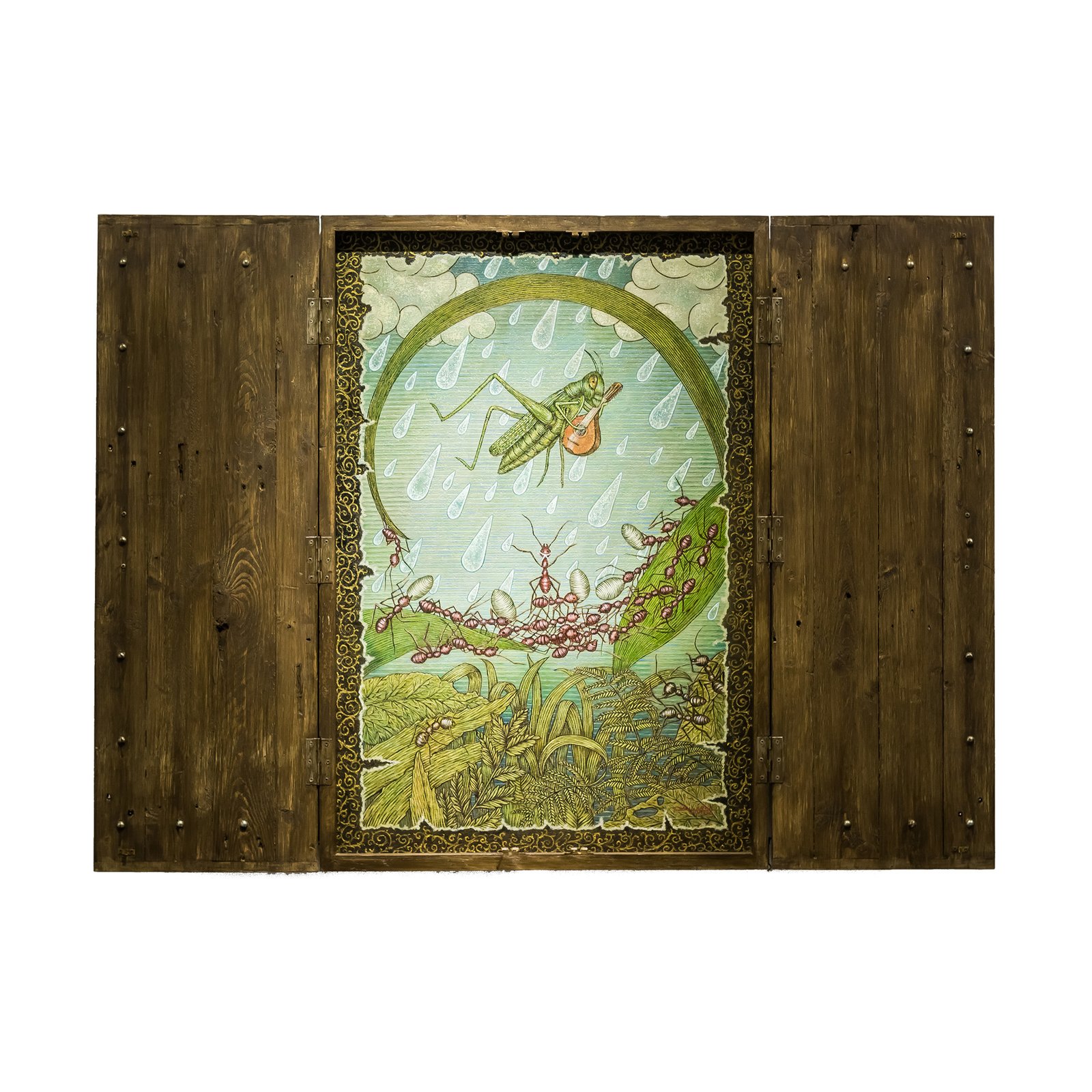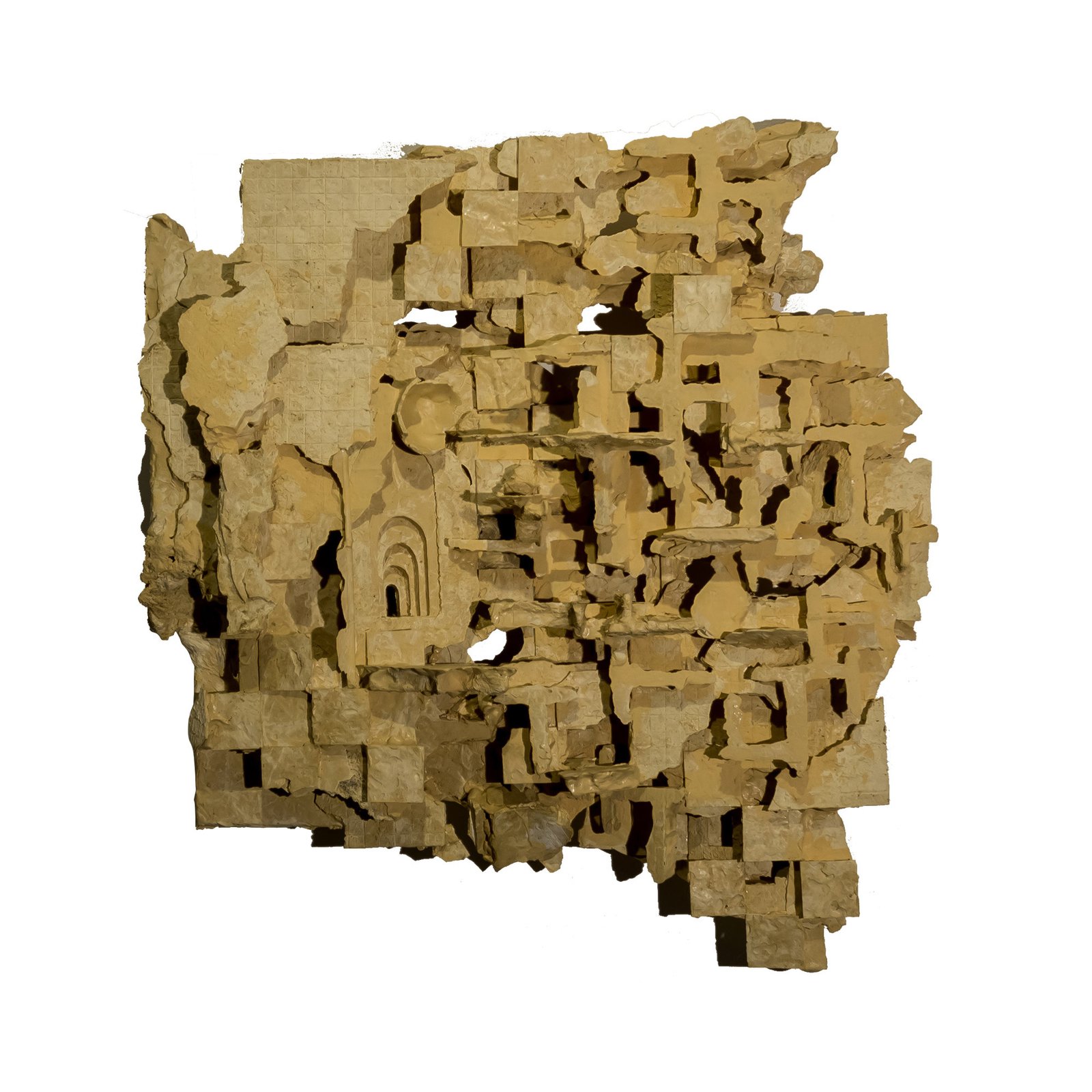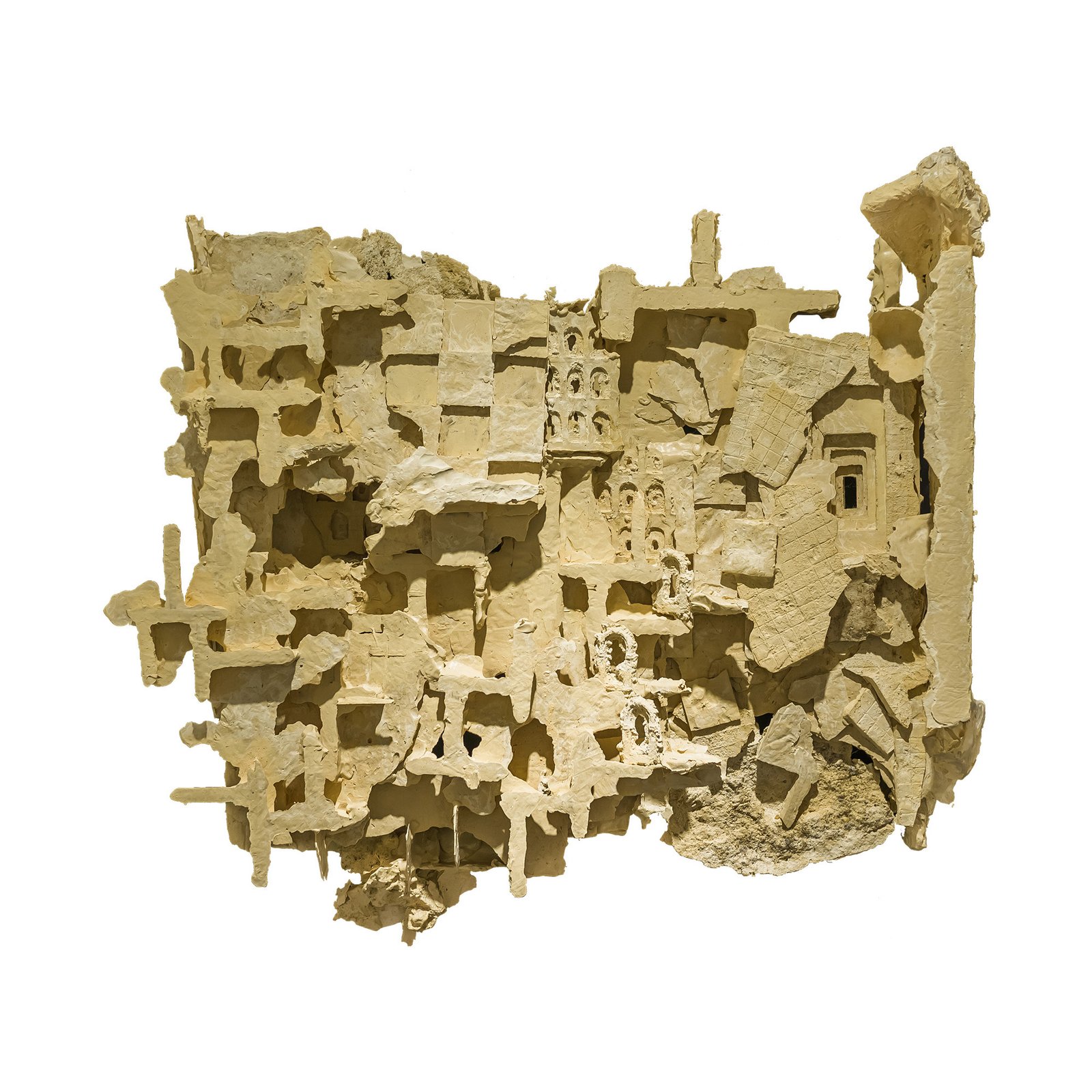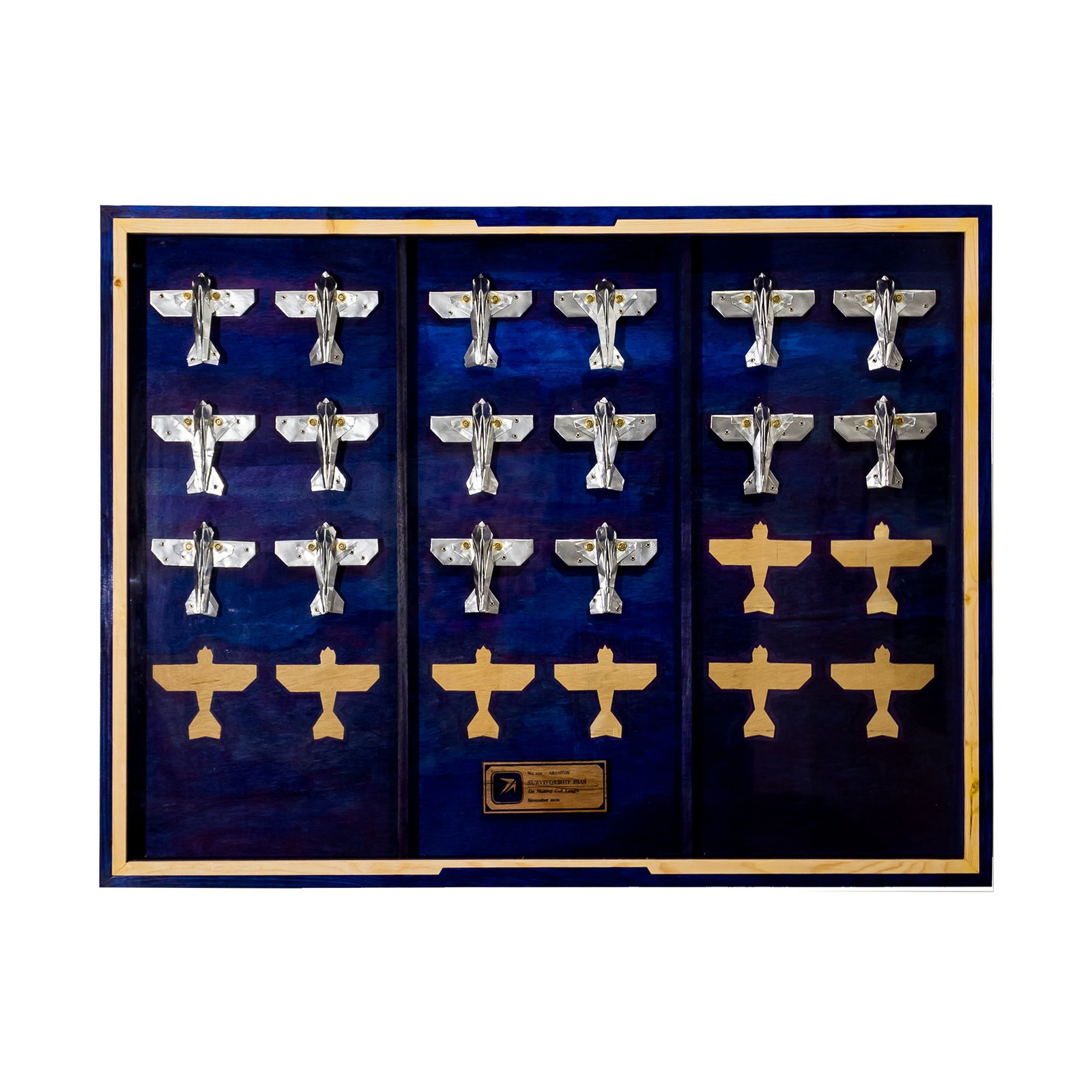On Making God Laugh
Start
08 January 2022End
12 February 2022Artists
Carlo Aranton, Chad Montero, Ioannis Sicuya
“Mann tracht, un Gott lacht”.
“Man plans, and God laughs.”
On Making God Laugh brings together four artists, four close friends, as they enjoy their own versions of being in their 30’s. The exhibit reunites them and gives them the opportunity to look back on various significant life events: marriage, fatherhood, remaining single. They reflect upon their growth in terms of their personal and professional lives, which has influenced and sustained their artistic development.
Working off of his fascination with erosion and decay, Ioannis Sicuya moves away from his usual themes of degradation to include subjects relating to overgrowth, permeation and progression.
In his works, which he divides into three levels: “Early Stage”, “Mid-Stage”, and “End-Stage”, he reflects on various significant points in one’s lifetime, highlighting the parallels between life and a game. Each level not necessarily references age, but explores the expectations imposed on an individual at each stage of life.
Within each stage, he invites the audience to engage in a visual tour through his miniaturized landscape of maze-like levels, to navigate through and/or get lost in their complexities.
By doing so, the audience is introduced into his far subtler point which is to question that very need to move forward:
“Why is it that, as if we were stuck in a game we don’t understand, we have that primal urge to move, or explore, or plain just displace ourselves from our current position or situation?”
“Why is it that although we are doubtful of any ‘rules,’ and regardless of whether or not we have a conscious purpose when, like in life, the playing field is just as convoluted and its rules (if any at all) are just as obscured, we are all still compelled to play our turns, even if it just means leaving everything to chance?”
Chad Montero’s work revisits the wealth of lore from old children’s stories, particularly from the fables he encountered as a child. As an adult, he re-examines the veracity of their purported “moral lessons,” which he finds, if not entirely inapplicable, are otherwise completely backwards and removed from the much harsher, more nuanced subtleties of real life.
In the real world, there is no moral narrative safeguard that ensures that the good guys “win.” More often than not, it is the “Pagongs” that lose and fall victim to circumstance to the benefit of the “Kunehos” and “Matsings” of the world.
“Butil,” “Lampara”, “Trono” and “Karera” lay bare these stark truths. The works are framed in an old cabinet and within the insides of a drawer to signify where such childhood stories end up lost in memory.
The works present ‘amendments’ to these outdated narratives. Montero fittingly borrows from old 12th century illuminated manuscripts, as if to give these satirical credence, while modifying them with new, updated “moral lessons” he gleaned from his own experiences.
Adeo Sta. Juana’s painstakingly precise, meticulously calculated constructional compositions become a setting that encourages digression, such as the playful and free-wheeling collaborative scribbles of his wife Magi and their daughter Chaouen. These serve as visual metaphors for how the best laid plans are still subject to the inevitable, yet interesting and hopefully delightful, uncertainties of life.
Adeo draws the inspiration for his works from their shared activities as a family. In “Valencia in Fourths and Eighths,” he takes inspiration from the simple act of eating an orange together. His knowledge in the principles of geometry has brought out the underlying math involved in dissecting the spheroid-shaped fruit.
His works, therefore, with “Imperceptible Matters” and the aptly titled “Trio Attempting Normalcy”, are more than just paintings. They are memories that physically manifest as traces of small, seemingly inconsequential activities in their lives.
Once more, using the medium as part of his message, Carlo Aranton contemplates upon order and chaos through his experimentations with Aluminum foil. Chosen for its delicate and fragile nature, he challenges himself to recreate origami pieces as a way of confronting his obsessive compulsions for perfectionism and control.
The titles of the three works in his Rhopalocera series: “Larva”, “Chrysalis”, and “Imago,” come from the Latin terms used to describe the stages of evolution of a butterfly. These three stages are formed in origami, juxtaposed against a backdrop of crumpled aluminum—as a way of conveying how our efforts to control and exercise “order” are but limited islands of convenience and comprehension against a vast continuum of entropy.
The use of foil instead of paper for origami, clues us into his analogy of how life ‘feels’ like—at least, to him. It’s delicate, susceptible to accidental damage and setbacks and, at least from an origami standpoint, it gets messed up very easily but it doesn’t get diminished in its use or value for being wrinkly and inconvenient. In fact, it is meant to do all that. And that is his point: The screwups were not aberrations, they were a feature and that if he’d just treated life more that way, he’d just may be on the verge of discovering a new ingredient to improve his “lemonade” recipe.
On Making God Laugh is a collaborative group show that dares to imagine how the Higher Power would laugh at these attempts to map out and tame an unpredictable world.
So, how do you make God laugh? Well… you tell Him your plans.
— Tony Aran














